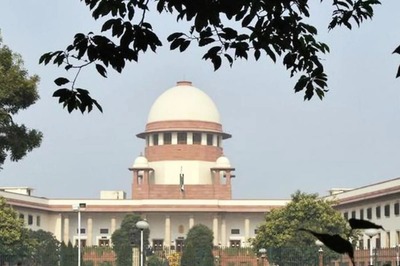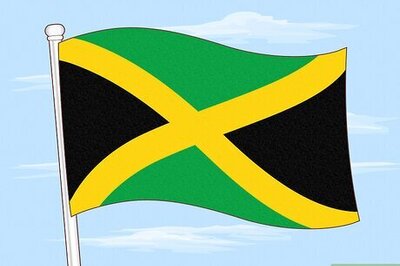
views
Dinobondhu Mahato (62), in Purulia’s Balarampur block, described himself as a baampanthi (Leftist) but adds that in 2019, he will vote for the BJP. This, he argues, doesn’t have to do with ideology but necessity. “We voted out the Left and if need be, we will vote out the BJP,” he said.
Purulia was, at 2pm, among the 19 seats that the BJP was leading at. The TMC's 2014 seat share of 34 reduced to a mere 22. TMC sources admitted that the transfer of CPI(M) voter share -- which in past polls had stayed stable at around 20 percent -- to the BJP had hurt them, badly.
Ths necessity, Mahato explained, “The Trinamool Congress has become exactly what it promised to get rid off. It is Baamer shesh din all over again.”From Cooch Behar in Bengal’s extreme north-east to Purulia, at its south-western border, there are few things that people agree on. But the phrase “Baamer shesh din” (last days of the Left) evokes near identical responses in almost all conversations.
The TMC, Mahato said, had become an "all powerful local mafia" while adding, “This isn’t to say that Mamata Banerjee isn’t trying, or that her government isn’t sending money for development to the village. It is just that only a few people seem to benefit and the common thing that they all have is that they are all TMC party workers.”
How Mamata lost control of Bengal
Mamata Banerjee’s victory in 2011, dethroning the Left Front that had ruled for 34-years, saw her immediately begin a process of consolidation. Strengthening her party in pockets that had traditionally voted for either the Left or the Congress as she systematically began increasing the TMC’s political imprint. By 2016, the TMC had won 213 of the 295 seats (72 percent). The feat was astounding. Even at the height of their powers in 1987, when the Left Front received 53 percent of total votes polled in the state, the CPI(M won only 187 seats (together with its allies, it won 250 seats in the 294 seat Assembly).
From Cooch Behar to Jhargram, voters said that this dominance had its consequences. Before coming to power, the TMC had consistently criticized the Left for turning the party into an all-seeing, all-controlling machine that was geared towards winning elections, what Abhijeet Mazumdar, son of Charu Mazumdar and the Darjeeling district secretary of the CPI-ML (Liberation) described as a “Sarkari Left” characterized by “social control and surveillance.”
In particular, there is anger over the recently concluded Panchayat polls in the state, which the BJP alleges saw over a 100 murders and PM Narendra Modi recently described as being more violent than in Kashmir.
BJP as an alternative
In the Left versus TMC narrative of Bengal’s politics that has dominated the state since the formation of the latter in 1998, BJP leaders said that their political strategy has revolved around projecting themselves as a viable ‘third front’. Their campaign, summarized by its slogan, ‘Ei Trinamool aar na’. (This Trinamool no more), reiterates this. Meanwhile, the BJP added that the oft-quoted TMC slogan, ‘Ei BJP aar na’ only emphasizes the saffron party’s importance, said leaders.
“Even before the 2016 campaigns, we were seen as a third-party. Especially with the Left and Congress getting together. This was a blessing in disguise for us. Mamata Banerjee had focused her efforts on the two and the TMC sought to decimate them. There was a vacuum left behind, and we have taken up the space,” said a BJP state committee member and member of election committee.
However the TMC leaders claimed that the absence of a Left-Congress alliance had the potential to benefit the TMC.


















Comments
0 comment